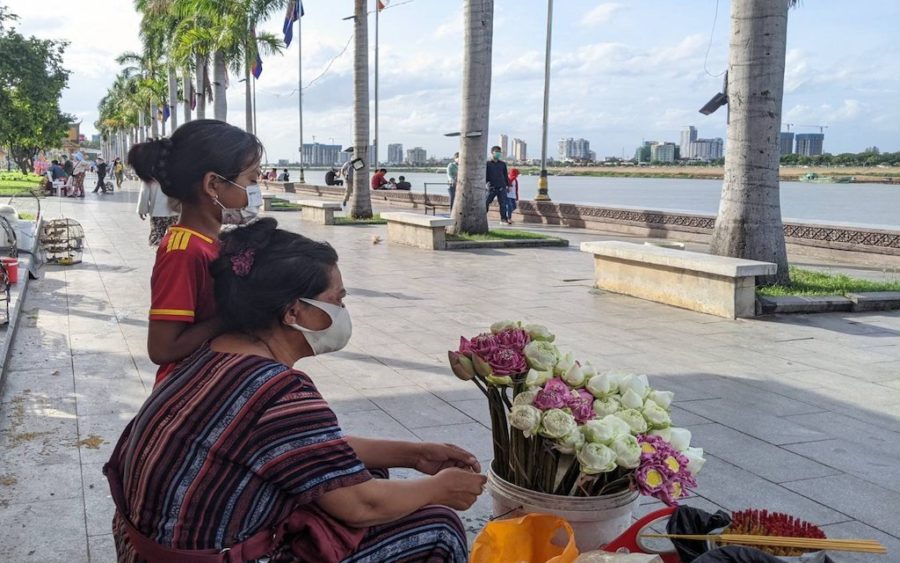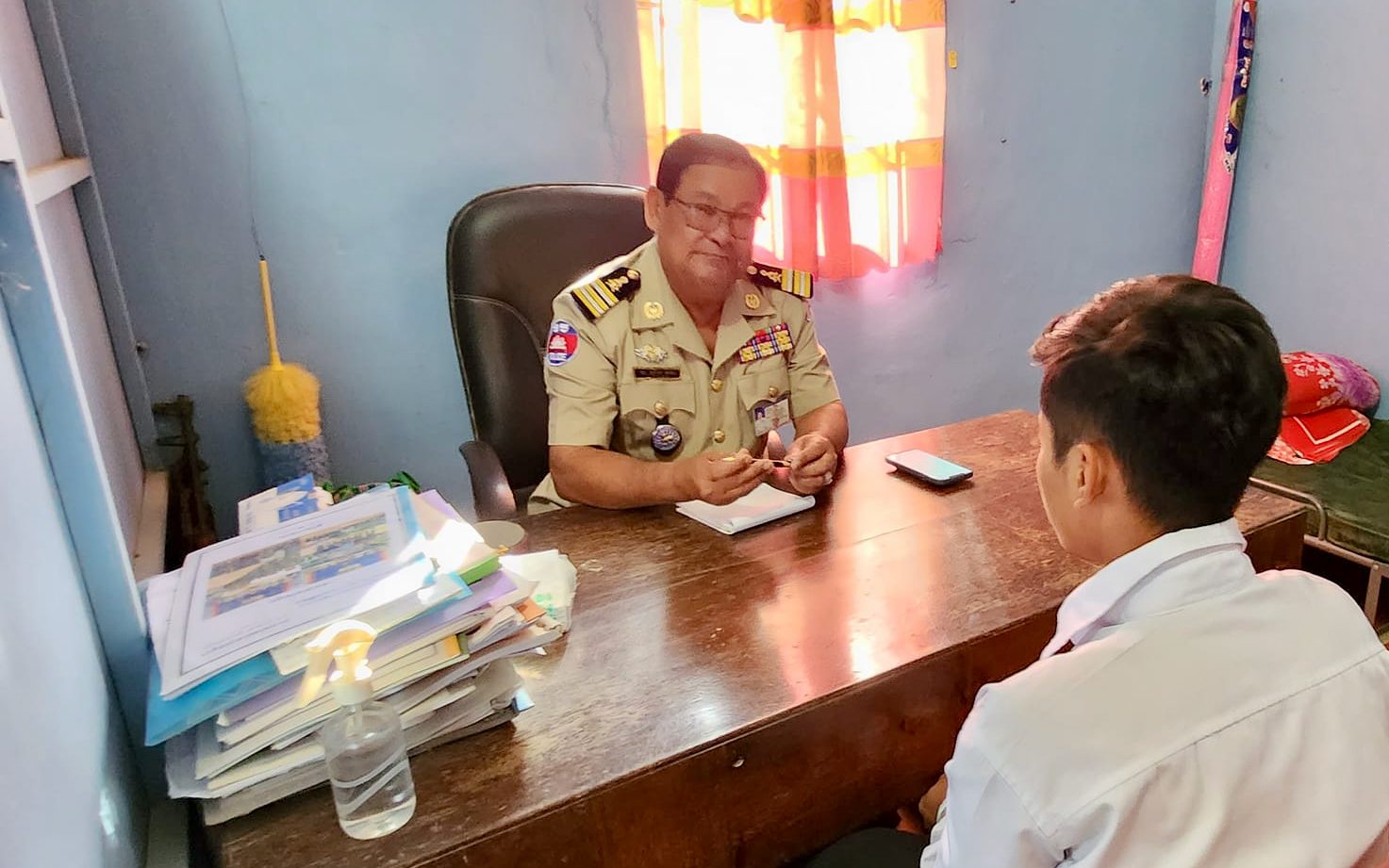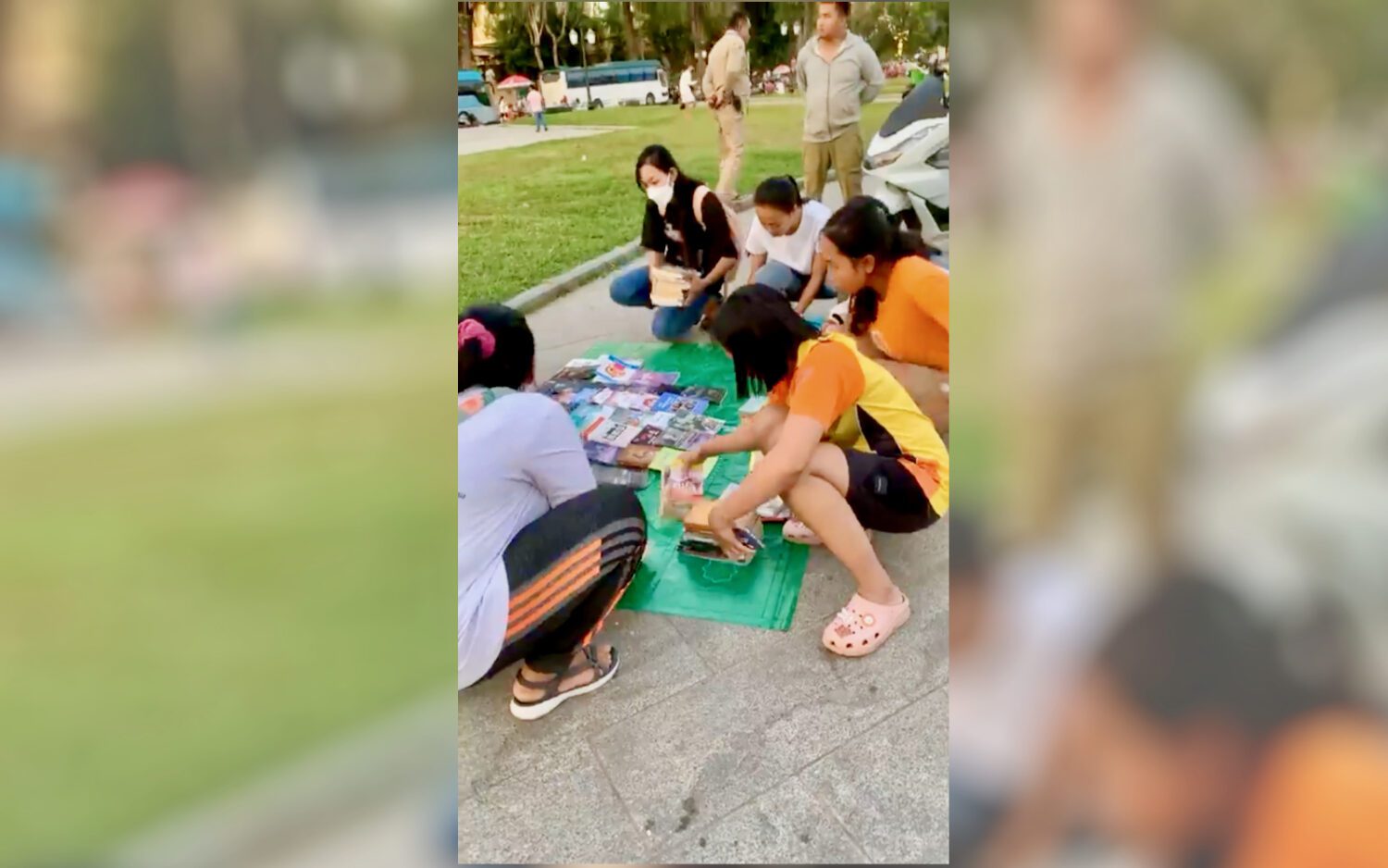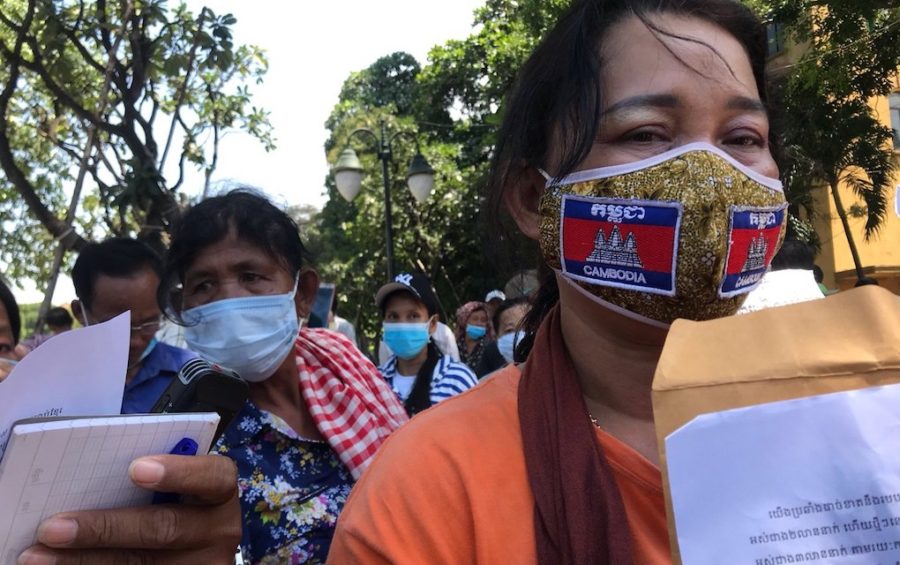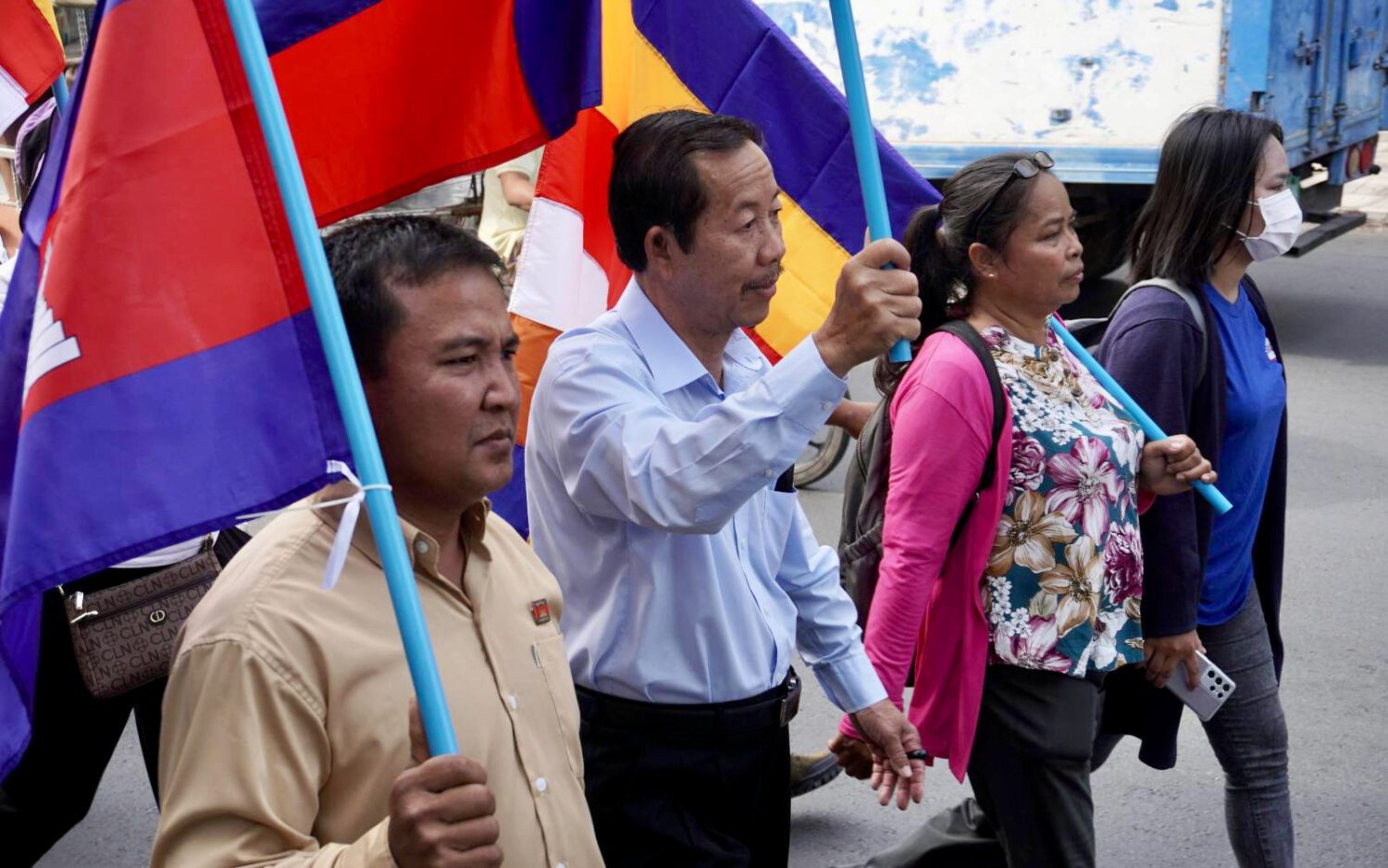Sor Chantho has been a flower seller in front of the Royal Palace for many years. She worked alone until recently, when she got a helping hand: her 9-year-old daughter.
The girl, who is in the third grade, became a full-time assistant to her mother after her school was shut down by the Covid-19 pandemic. Although the classes have moved online, Chantho said her daughter’s learning was now on hold because she simply has no money to buy a smart device to get online. The mother and daughter live alone, and the school has not provided anything except books, she said.
The 9-year-old is among the many Cambodian children who are now being left behind in education.
At least one-third of children in the country are not continuing to learn during the school closures, according to a report released earlier this month by Christian aid group World Vision.
Some 50 percent of children do not have access to a smartphone, and 63 percent lack internet access at home, according to the survey. Only 2.7 percent have access to a tablet or computer.
The survey, based on 621 households and 619 children aged 11 to 18 in Phnom Penh, Siem Reap, Kampong Chhnang and Preah Vihear, also points to other difficulties faced by households that could be worsening the problem.
Three-quarters of households reported a drop in incomes since the pandemic; average reported incomes dropped from $63 to $35 per week.
As a result, only half of households said they could cover their food expenses; only 28 percent their loan repayments; and only 13 percent their rent. They were coping by reducing food spending — on average from $25 a week to $16 — as well as taking on more debt and spending savings.
The survey, which was conducted in March and April as Phnom Penh faced a surge of Covid-19 cases and just ahead of its citywide lockdown, found greater struggles in the capital compared to the provinces.
Daniel Selvannayagam, World Vision’s national director, said the government had made “impressive efforts” against Covid-19 in the country.
“However, there is a real risk that the pandemic will have a long-lasting impact not only on the lives of Cambodian children,” he said. The pandemic “will put pressure on the poorest families, forcing children to drop out of school or work to compensate for the loss of income or to repay the debts they have taken during the pandemic. Especially for the most vulnerable families, girls, ethnic minorities.”
Am Sam Ath, monitoring manager at rights group Licadho, said school dropouts also raised the issue of child labor.
“If we talk about child labor during in pandemic in Cambodia, students have dropped out of school because of the financial crisis during the lockdown. So some of them have been working to support their families,” Sam Ath said.
In nearly half the countries in developing Asia, schools have been closed for more than 200 days during the pandemic, according to Unicef. The organization added that the region should prepare for a reduction in expected gains in reading and math skills, as well as a wider achievement gap between disadvantaged children and their peers.
In Cambodia, schools were closed nationwide in March last year and only gradually reopened in August. They were closed again in November, reopened in January, and shut again following the “February 20” cluster this year.
In a joint op-ed on May 31, a group of children’s NGOs said the Covid-19 pandemic “has deprived children from their most essential rights and put their childhood on hold.”
Children in Cambodia were battling loneliness, fear and stress amid school closures, increasing isolation from their friends, and uncertainty about their futures, they said, urging the safe reopening of schools.
The message was echoed regionally by Unicef and the World Health Organization, which pointed to increases in anxiety, depression and self-harm among school-aged children since the start of the pandemic.
Primary schools, preschools and early childhood development centers are not high-risk settings for transmission, and could be reopened, they said.
“School attendance is critical for children’s education and lifetime prospects. The long-term costs of closures — both for individual children and society — are simply too large to justify on a continuing basis,” the two U.N. organizations said.
Education Ministry spokesperson Ros Soveacha pointed a reporter to a ministry Facebook post from May 28, which noted the continued suspension of public and private educational institutions across the country.
“Both public primary schools and public secondary schools can examine the feasibility of conducting distance learning online or in small batches, depending on the risk level of the Covid-19 situation, and the resources under the jurisdiction of school management and teachers,” the post said.
Chantho, the flower seller, said for her there was no other choice but to bring her daughter to work with her outside.
She had no one else to look after the 9-year-old when schools were closed, she said. These days, both of them return home around 9 p.m. at night.
Chantho said the best her daughter could do to keep up with her learning was to read the few books she had whenever time allowed.
“She is very clever and she likes to learn,” the mother said. “But she never has a chance to study like others during this pandemic.”


